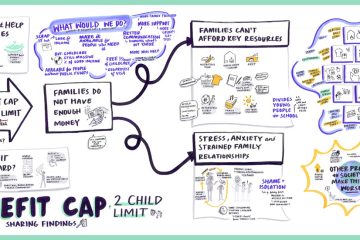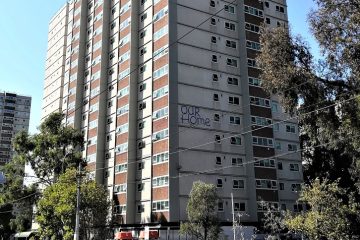Johanna Kinnock reports on an important initiative: how a harm reduction café in Copenhagen quietly provides an alternative to the war on drugs.
Behind the long counter of Café Dugnad, smells of spices and meat float out of industrial ovens. Light streams in through the glass doors of the smallish café, as loud hip-hop plays through the speakers. All day, someone hands out coffee and juice over the counter, and the café serves around 200 plates of food at lunch and dinner. At first sight, Café Dugnad has many of the markings of a regular café, one of many located in the chic neighbourhood of Vesterbro, Copenhagen.
Yet, upon closer inspection, things are not what they seem. Firstly, there is no cash register, no one is taking payments. The guests at the tables are not speaking much, slumping instead on their chairs, often in a kind of daze. Most are dishevelled and very skinny. And behind the counter are a dozen or so boxes of syringes, measuring cups, and condoms, which are handed out to people upon request. Café Dugnad is a self-proclaimed ‘harm reduction café,’ a space for people to do hard drugs (most commonly cocaine and heroin) in a sterile and supervised environment, whilst getting a healthy meal. In practice, this means that guests enter, pick up a meal, pick up a syringe, do their drugs, and walk out with no further questions asked.
Reduction
Harm reduction is an approach that recognizes drug use as inevitable in society. The International Harm Reduction Association defines harm reduction as ‘practices that aim primarily to reduce the adverse health, social and economic consequences of the use of legal and illegal psychoactive drugs without necessarily reducing drug consumption’ (International Harm Reduction Association, 2010: 2). In this pragmatic understanding of drug use, helping the user becomes a question of lowering the risks associated with drug use, such as infection and overdose, in contrast to an abstinence approach, which aims to eliminate drug use altogether.
Most of the guests at Café Dugnad are drug users, caught in the cyclical and often fatal loop of addiction. On my first day at the café (before I knew much about harm reduction) I asked Laura, the volunteer coordinator, how many users who come to Café Dugnad eventually stop using drugs? She sighed slightly, then told me in a kind and pragmatic tone: ‘barely any’. She continued:
‘there just aren’t many miracle stories. Once they come here, they are already in a very difficult place. So, we keep them alive, we keep them stable. That’s the best we can hope for.’
Harm reductionists aim at preserving life, asking, as the staff at Dugnad did: what can we do so that you do drugs in the safest possible way? In many cases: what can we do to keep you alive?
To be clear: should a guest at the café ask Laura for help in getting ‘clean’ she would naturally initiate for them to ‘move on in the system’: in other words, direct the person towards therapists, social workers and rehab centres. Harm reduction as practiced at Dugnad is not at odds with a recovery-based model and the staff were highly supportive of users who wished to take such steps. But the Café itself focuses on providing users with safe drug taking equipment and a place to relax and eat on their daily drug circuit. It is staffed by chefs and social workers, all of whom are trained in CPR and crisis management. Thereby the café also provides its patrons with supervision while they use, which mean that overdoses and other adverse reactions can be responded to swiftly.
Overdose
About once a week, a guest overdoses in the café or its courtyard and the staff must quickly call an ambulance. The guests are generally thankful to have people observing them use. One guest in her 60s, with 30 years of drug use behind her, relayed to me the danger she had faced doing drugs at home and elsewhere in the city:
‘I overdosed in my bathroom once. Had it not been for the fact that I managed to throw up, I could’ve been dead. That’s why I always come to Dugnad to inject now, as long as there are people around, it can’t go too wrong’.
For this guest, like many users, living with drugs is about survival, rather than rehabilitation. And, in terms of survival ‘harm reduction’ has shown to be effective at more than an anecdotal level. The Danish government formally embraced the harm reduction approach in 2012 – by opening so-called ‘fixing rooms’ (spaces in which users do drugs under the supervision of nurses) and endorsing other harm reduction spots like Dugnad. Since then, all 700 recipients of emergency overdose treatments in the fixing rooms have survived, and HIV and HCV infection rates have been in steady decline. The life expectancy for drug users has increased, and while drug overdose rates have soared globally in the last 10 years, Denmark’s have been stable during this period.
Dugnad is a global pioneer of harm reduction. The Café is in Vesterbro, a historically working class (now highly gentrified) area of Copenhagen, where drug use is prevalent. When psycho-active drugs arrived in Denmark in the 1970s, they permeated Vesterbro’s culture of heavy alcohol use. The Danish government responded to drug use with moral panic, much like other European countries at the time, and initially criminalized drugs and their users harshly. In Vesterbro, this meant a huge police deployment and targeted policies such as ‘Drug Policy 90’ which designated certain zones in which drugs were ‘extra’ illegal; in these zones, people found in possession of even a tiny amount of cocaine or heroin were harshly prosecuted.
This war on drugs-style approach led unequivocally to less trust in police, less interaction with social services and a higher death rate in the drug user population in Denmark (Frantzen, 2005; Gadejuristen, 2010), proving what harm reduction advocates have been arguing for decades: that an omnipresence of antagonistic police always gives way to hasty fixes in dirty places with unsafe equipment.
In 2008, concerned by the precarity that the users of Vesterbro faced, a group of harm reduction activists opened Dugnad as a volunteer-run kitchen serving food to the ‘street folk’ of Vesterbro. Then, as now, there were around 20,000 active hard drug users in Denmark, and around 2000 of these people frequented Vesterbro during their daily drug grind. Inevitably, the bathrooms of Dugnad soon became an unofficial ‘fixing room’, with the remarkable effect that the public drug scene around Vesterbrogade was almost totally depopulated overnight. This was much to the relief of newly gentrified Vesterbro’s now upper middleclass population of homeowners who were tired, as one reader letter in the national newspaper Politiken put it, of finding ‘syringes in their stairwells.’
By 2012, this unlikely alliance of harm reduction activists and middleclass homeowners had successfully lobbied Denmark’s newly elected moderate left government to change their policy on drug use altogether. A 2012 government policy report reads: ‘Denmark should learn from international experience and strengthen its harm reduction efforts.’ In place of Drug Policy 90 a ‘decriminalized drug area’ was established in Vesterbro, where possession of drugs for own use is not punishable.
Logic
Local authorities started subsidizing Café Dugnad, turning the volunteer-funded project into a regulated institution under partial municipal governance. Radically, in 2016 the government also opened the world’s largest fixing room, H17, a mere 100 meters from Dugnad, where more than 5000 users are currently registered. Almost every year since, a new fixing room has opened in a small or large Danish city. The work started at Café Dugnad has profoundly changed how Danish society deals with drug users at both policy and social levels.
The harm reduction logic established by the founders of Dugnad and other local activists: that decriminalizing – rather than punishing – drug use creates more stable conditions for users and saves more lives has gained a place in Danish national policy. None of this concerned the guests and staff at Dugnad much on a daily basis. The latter’s focus is clear, short-term and cyclical: get the guests food, get them coffee, keep an eye on them. The staff at the Café are a colorful bunch of volunteers, chefs and social workers. A few have experience with hard drug use (like Lars, who is tasked with watering the plants in the yard). What mainly binds the staff is their activism, their cheeky pride in a still radical profession.
In practice, I observed that the staff took a kind of laissez-faire, unbothered approach to drugs. Observing the busy yard, guests huddled eating and doing drugs, the Café’s manager, Nicolaj, told me matter-of-factly:
‘I’m not going to come and tell you to get off drugs. You have to want it. As long as you want to stand here smoking crack, we’ll accept it. We’ll cook for you and be your friend. We’re not going to come and tell you to do something else’.
At Dugnad, not telling guests what’s best for them is a basic creed.
Further, because of the café’s location within the novel decriminalized drug zone it helped shape, guests are awarded the dignity of not looking over their shoulder for the police, and staff the relief of not having to police guests. Instead, the atmosphere between staff and guests is jokey and familial. Throughout the day, guests smoke cigarettes and get each other coffee, listening to music and discussing various topics, sharing – if they please – their thoughts regarding drug use. The Café is, against what might be expected, cosy.
What gives Dugnad this uniquely – to borrow a popular Danish term for cosy – ‘hyggelig’ feel? Certainly the café’s privileged location in a decriminalized zone contributes to making guests feel comfortable. But there’s more to it. What makes Dugnad truly stand out from other harm reduction institutions is its deceptively humble aims: cooking for the users and, as Nikolaj put it, ‘being your friend’.
References
Frantzen, E. (2005). Narkojakt på gateplan. Om politikontroll av narkotika på Vesterbro [Drug hunting at street level: About police enforcement of drugs in Vesterbro]. Copenhagen: University of Copenhagen.
Gadejuristen. (2012). Forbudszone er nu fortid! Accessed on 4 Sept 2022 at http://www.gadejuristen.dk/forbudszonerne-er-nu-fortid
International Harm Reduction Association. (2010). What is harm reduction? London: International Harm Reduction Association. https://www.hri.global/files/2010/08/10/Briefing_What_is_HR_English.pdf
Johanna Kinnock (she/her) is an anthropology and politics graduate from Cambridge University. Currently working as a freelance journalist and studying for a masters in modern culture at Copenhagen University. Twitter: @Johannakinnock
[You can read part 2 of this blogpost at https://appsoc.org.uk/?p=2073 ]



0 Comments